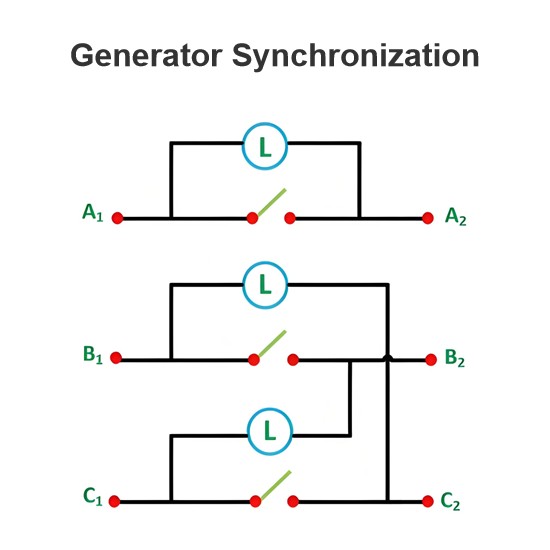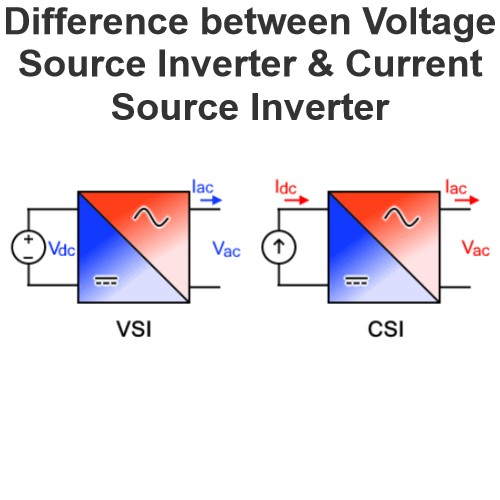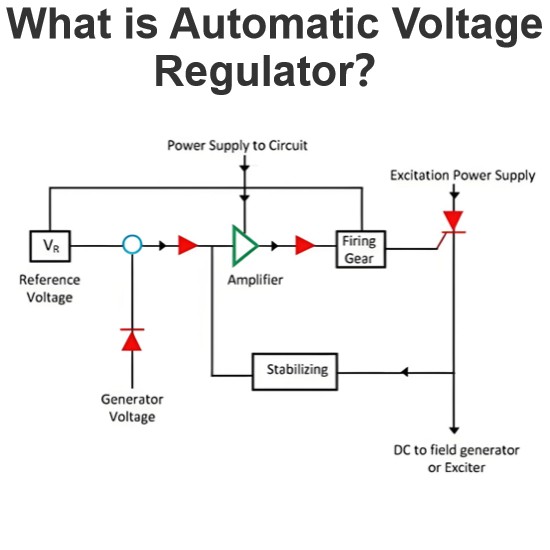Ammeter Shunt
Definition:An ammeter shunt is a device that offers a low - resistance path for the flow of current. It is connected in parallel with the ammeter. In certain ammeters, the shunt is built - into the instrument, while in others, it is externally attached to the circuit.Reason for Connecting the Shunt in Parallel with the AmmeterAmmeters are designed to measure low currents. When it comes to measuring heavy currents, a shunt is connected in parallel with the ammeter. Due to its low - resistance path, a substantial portion of the measured current (the current to be measured, denoted as I) flows through the shunt, and only a small amount of current passes through the ammeter.The shunt is connected in parallel with the ammeter so that the voltage drop across the ammeter and the shunt remains identical. As a result, the movement of the ammeter's pointer is not affected by the presence of the shunt.Calculation of Shunt ResistanceConsider a circuit used for measuring current I. In this circuit, an ammeter and a shunt are connected in parallel. The ammeter is designed to measure a small current, say (Im). If the magnitude of the current I that needs to be measured is much larger than (Im), passing this large current through the ammeter would burn it. To measure the current I, a shunt is necessary in the circuit. The value of the shunt resistance (Rs) can be calculated using the following expression.
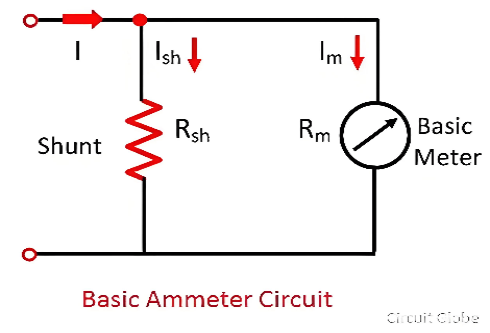
As the shunt connects in parallel with the ammeter, thus the same voltage drop occurs between them.
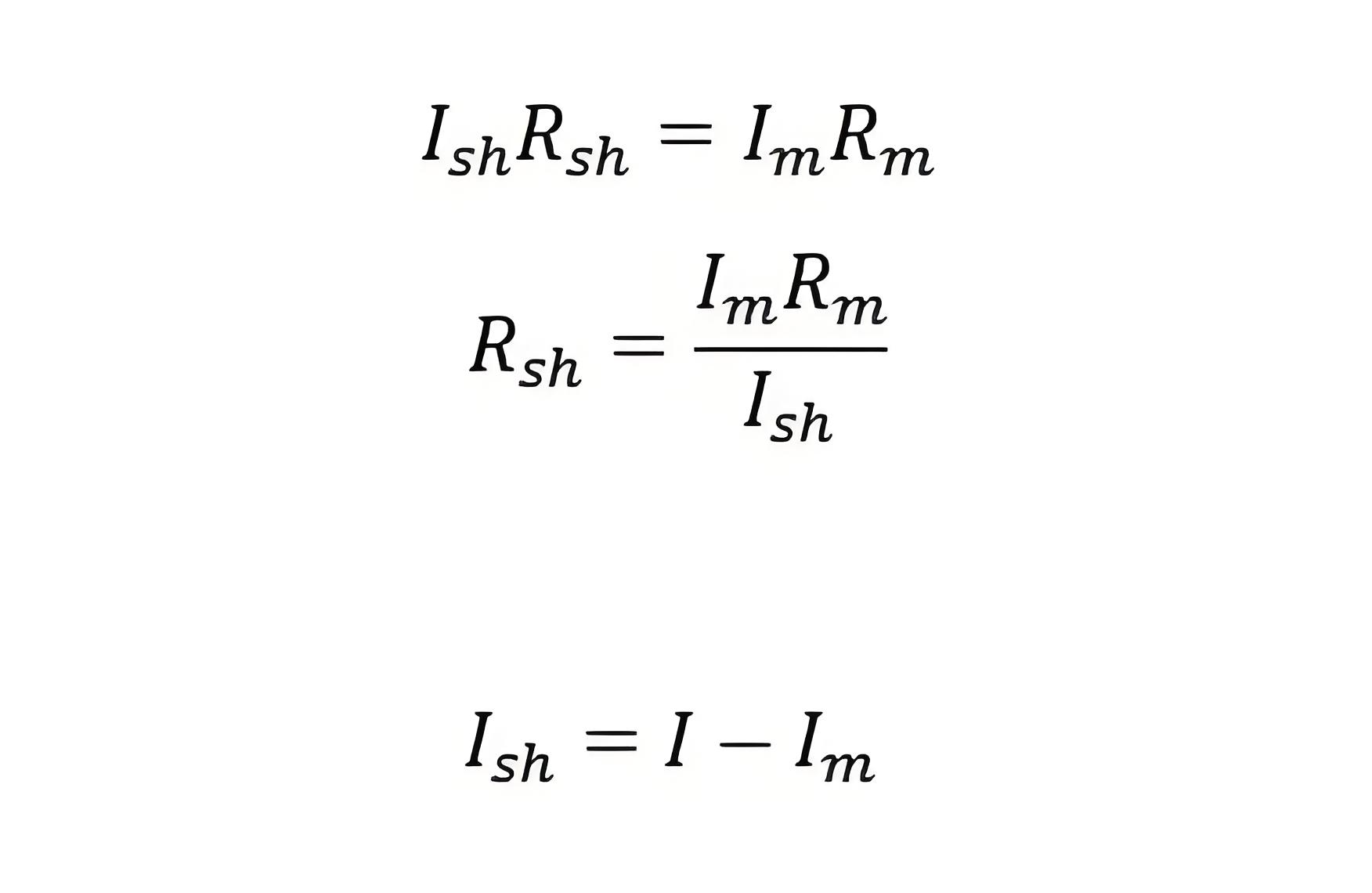
Therefore the equation of shunt resistance is given as,
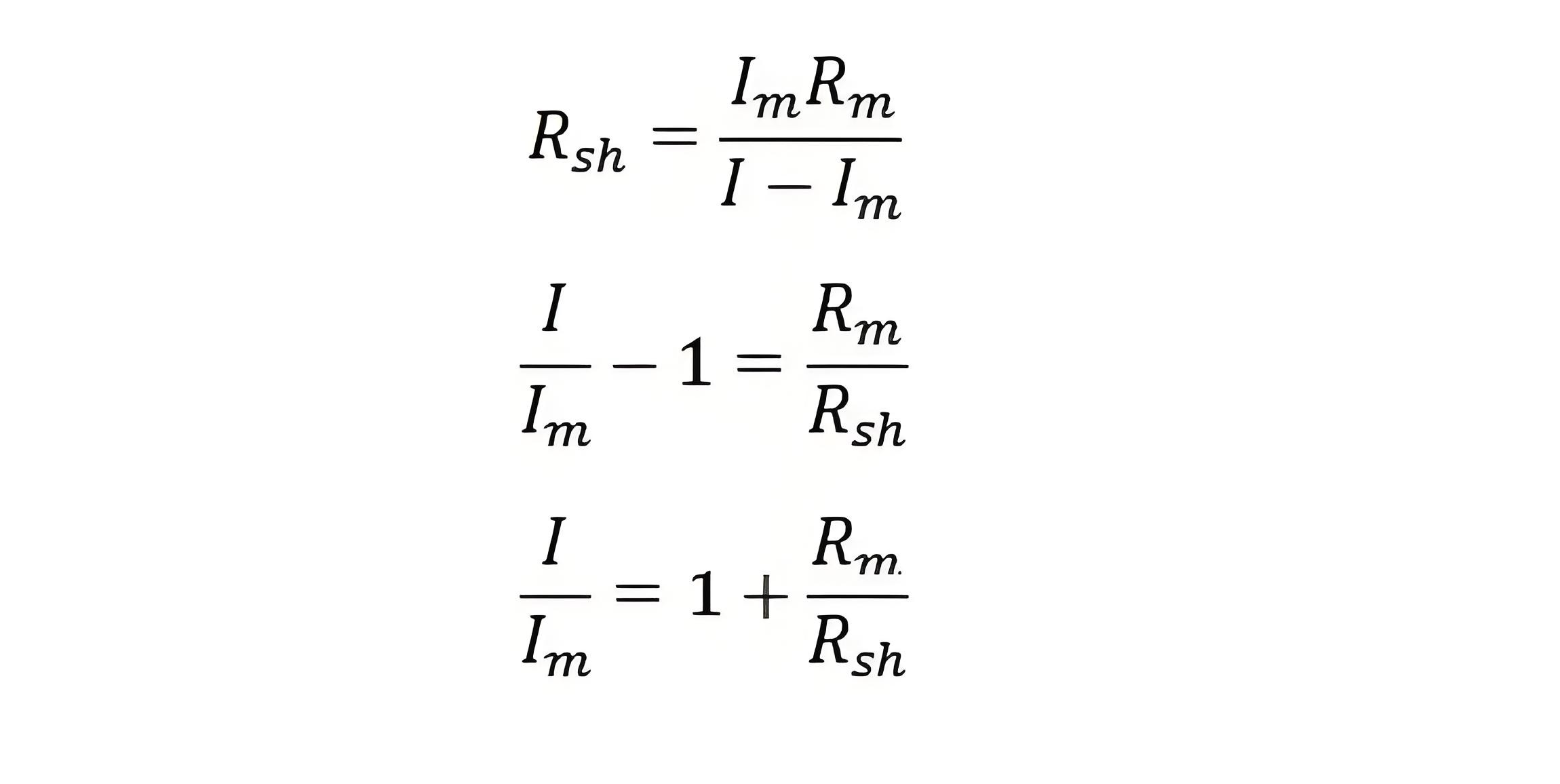
The ratio of the total current to the current requires the movement of the ammeter coil is called the multiplying power of the shunt.
The multiplying power is given as,
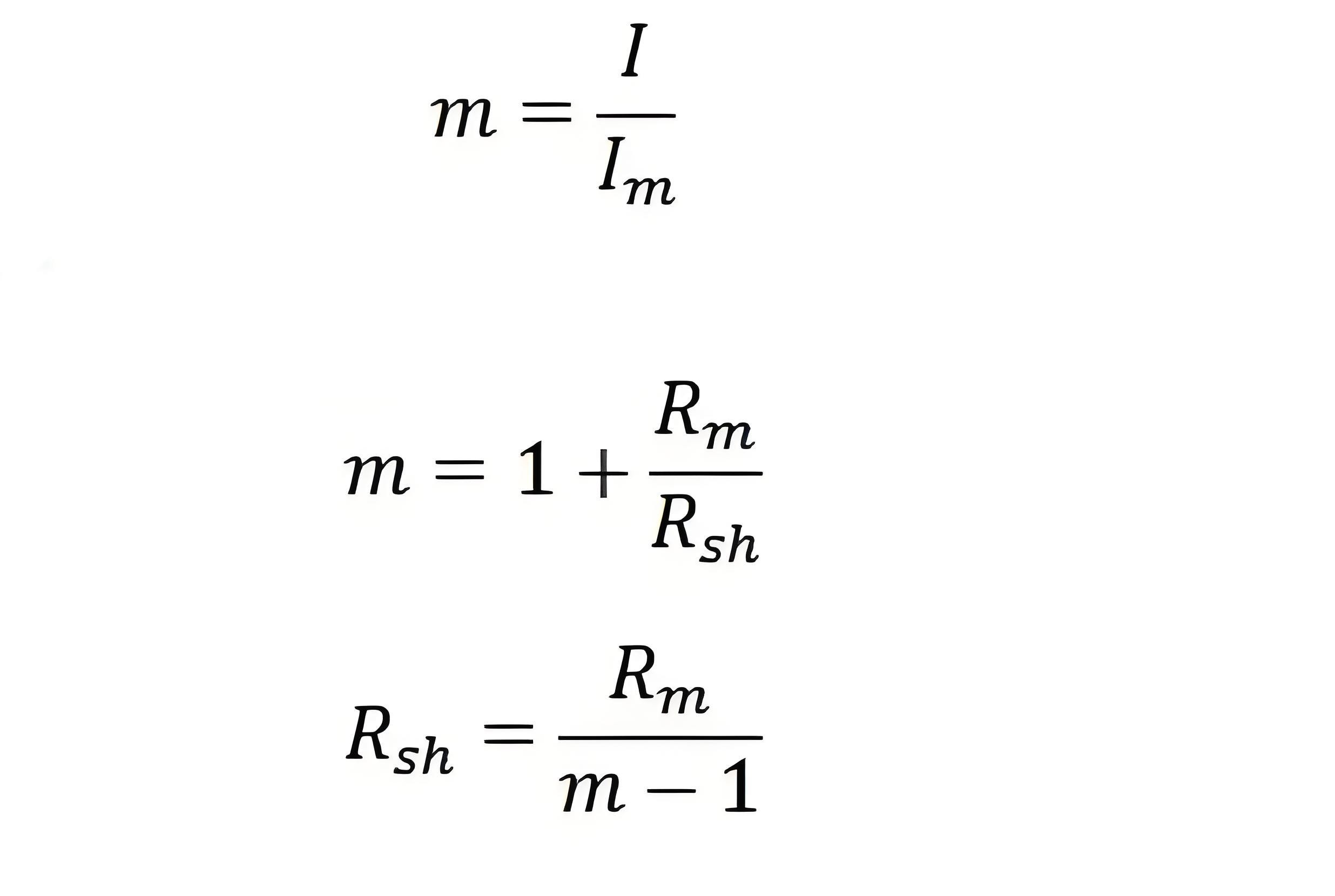
Construction of Shunt
The following are the key requirements for a shunt:
Resistance Stability: The resistance of the shunt should remain constant over time. This ensures consistent performance in accurately diverting the appropriate amount of current.
Thermal Stability: Even when a substantial current flows through the circuit, the temperature of the shunt material should not experience significant fluctuations. Maintaining a stable temperature is crucial as temperature variations can affect the resistance and thus the functionality of the shunt.
Temperature Coefficient Compatibility: Both the instrument and the shunt should have a low and identical temperature coefficient. The temperature coefficient describes the relationship between changes in the physical properties of the apparatus, such as resistance, and variations in temperature. By having a well - matched low temperature coefficient, the overall measurement accuracy remains stable across different temperature conditions.
In the construction of shunts, Manganin is commonly used for DC instruments, while Constantan is typically employed for AC instruments. These materials are selected due to their favorable electrical and thermal properties, which enable them to meet the stringent requirements for shunt operation in their respective current - type applications.
The Electricity Encyclopedia is dedicated to accelerating the dissemination and application of electricity knowledge and adding impetus to the development and innovation of the electricity industry.

